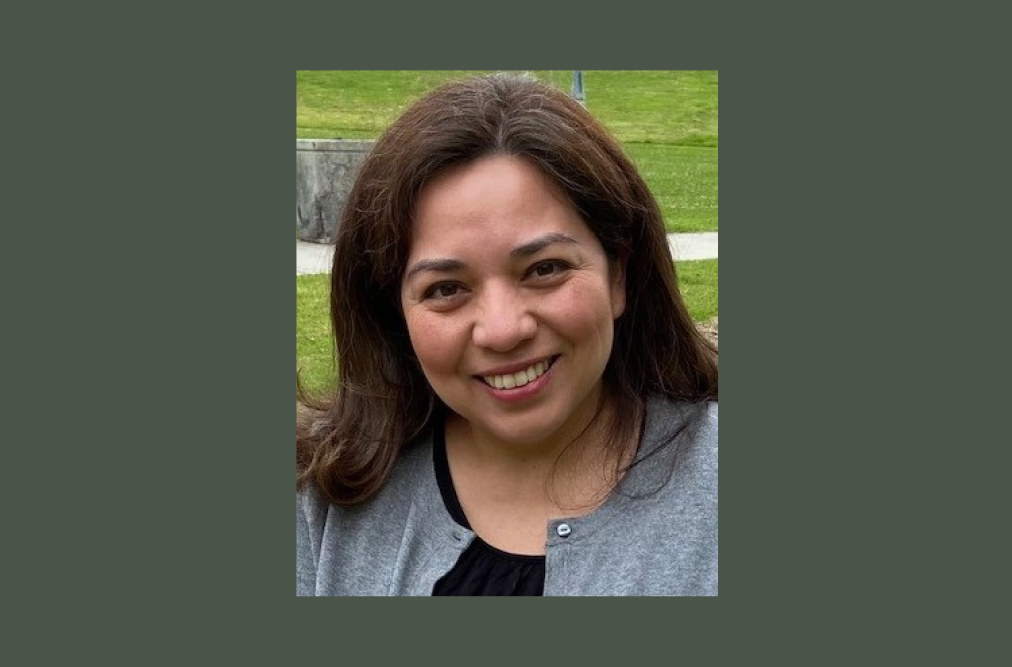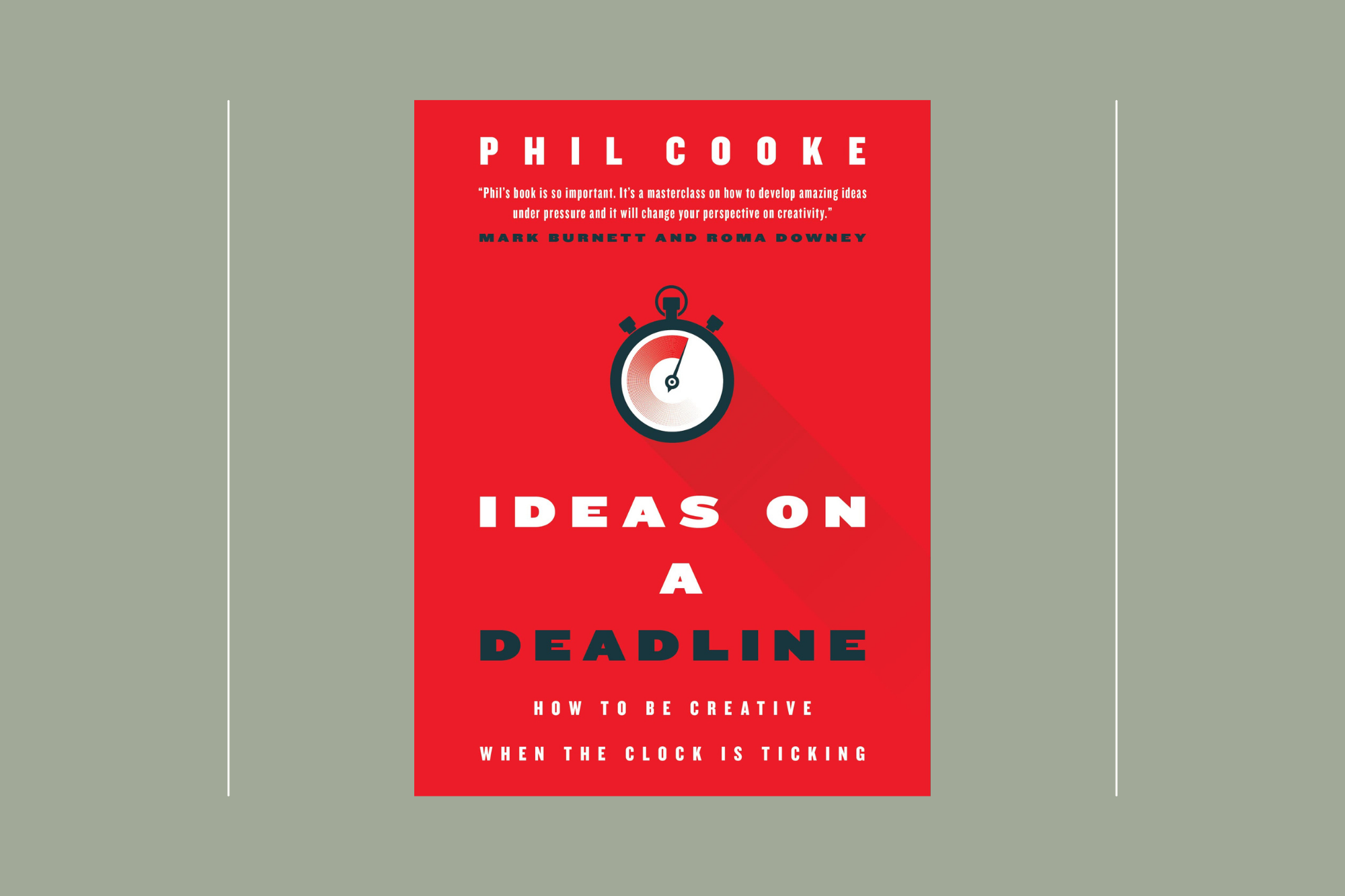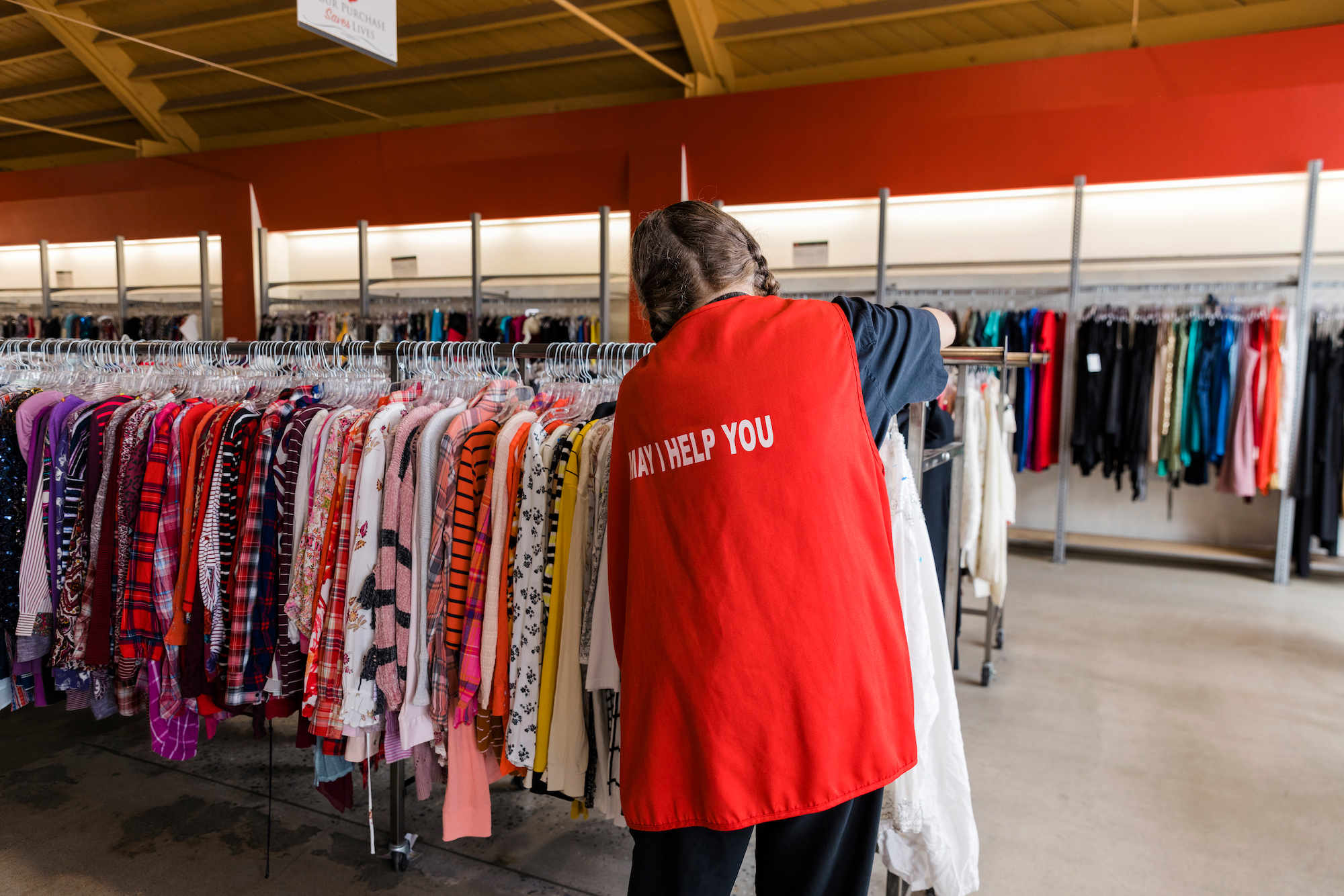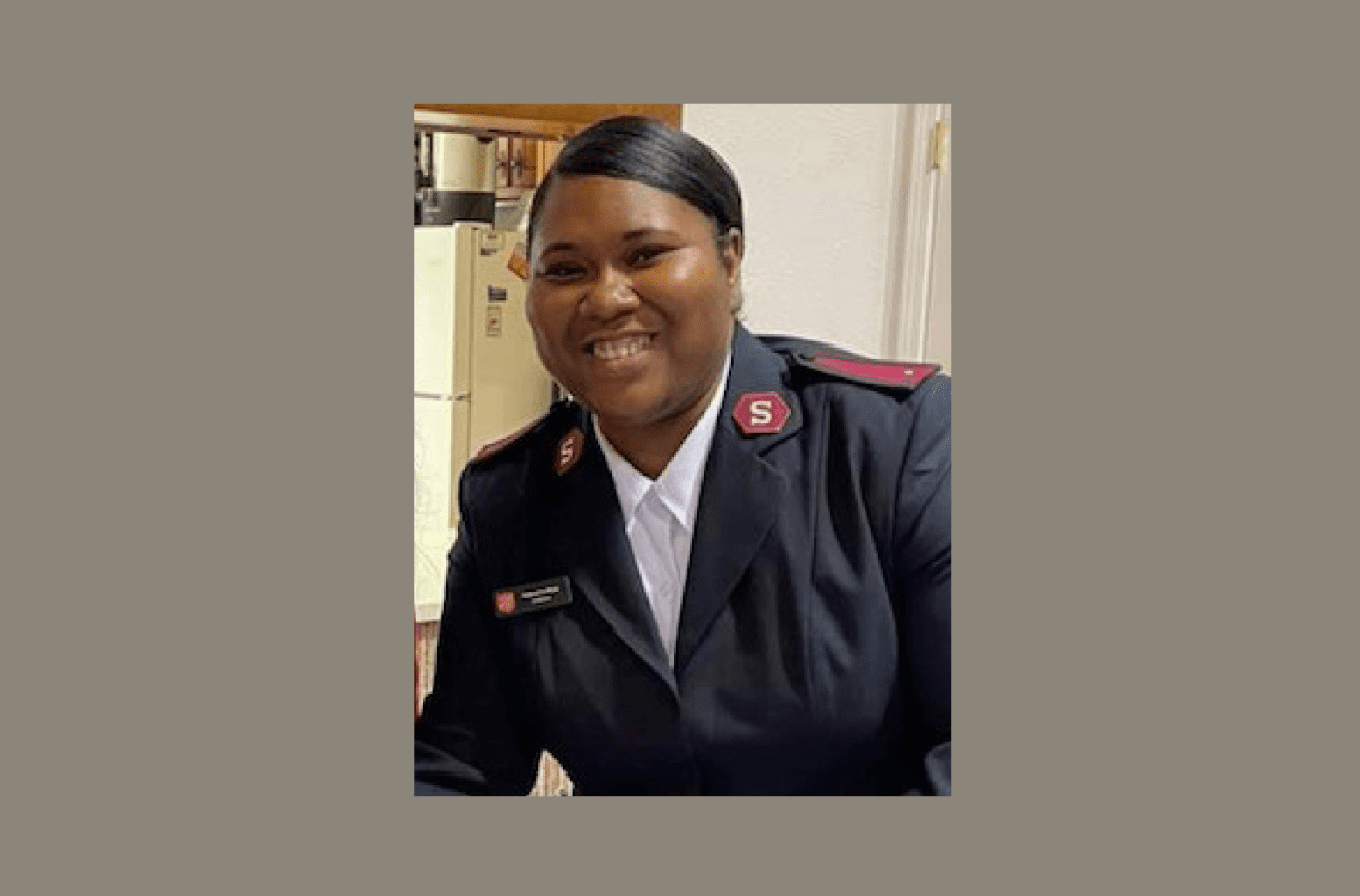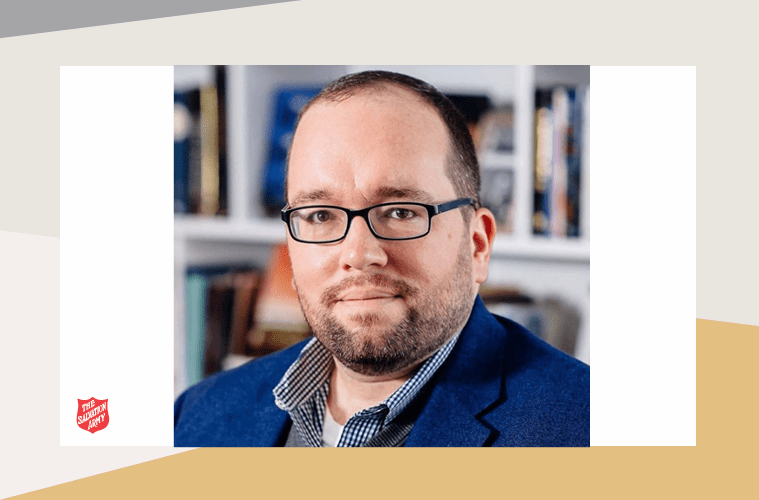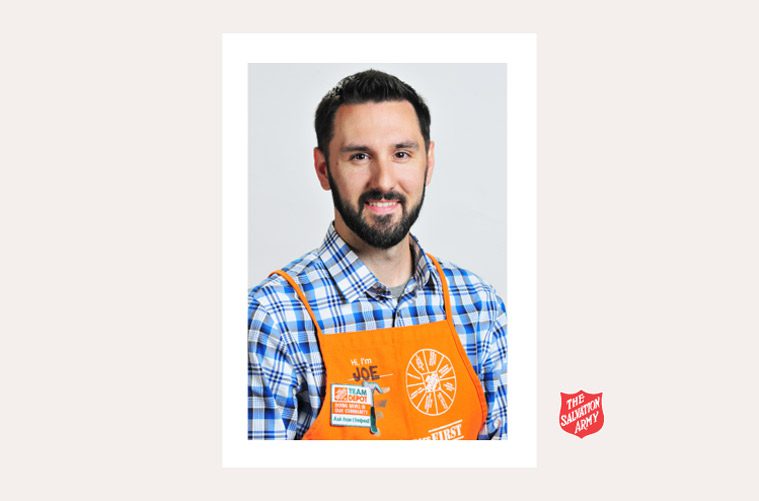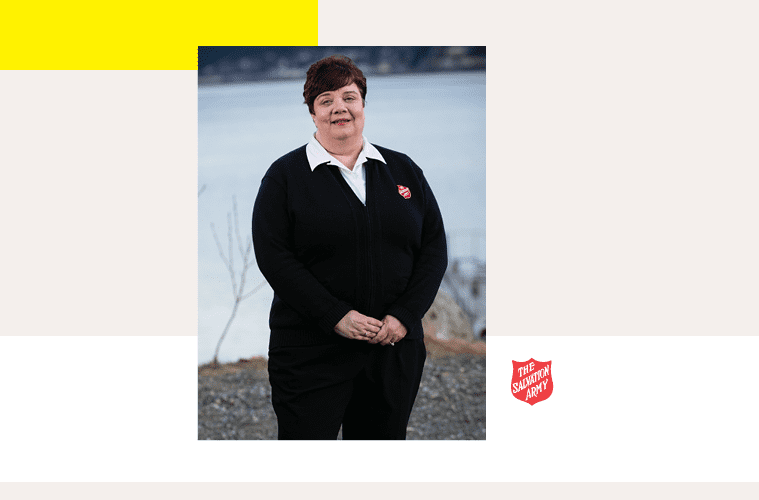Listen to this article
Listen to this article
Loading
Play
Pause
Options
0:00
-:--
1x
Playback Speed- 0.5
- 0.6
- 0.7
- 0.8
- 0.9
- 1
- 1.1
- 1.2
- 1.3
- 1.5
- 2
Audio Language
- English
- French
- German
- Italian
- Spanish
Open text
108: the two things that make an impactful volunteer with adriana thiele. did you know more than 2 million people volunteered with the salvation army across the u.s., according to the organization’s 2021 national annual report? that’s 2,052,933 people, to be exact, who freely gave of their time and skills simply to help—to do something. and that gift is not isolated to the salvation army. in fact, the world happiness report found in 2021 global rates of helping strangers, volunteering and giving to charity were nearly 25% above pre-pandemic levels. what about you? have you ever found yourself wanting to volunteer, but perhaps were unsure of what to do or how to go about it? here’s the key: you can make an impact in the fight for good with whatever time and skills you have. whatever your interest, there is a you-sized need for goodness in the world. your gifts are needed. you are needed. adriana thiele is the volunteer engagement coordinator for the salvation army in san diego, california. she’s on the show to share more about her experience working with volunteers, how things have changed in recent years and how you can get involved. and we’ve put together a guide on how to be an impactful volunteer with nine habits to help you make a difference in the lives of others. grab your copy at caringmagazine.org/volunteer. when you strive to do good, you help build a safer world for all and give others a lasting display of the love behind your beliefs. and studies show it’s good for you, too. show highlights include:. adriana’s story—the highlights of what brought her to today. why she is drawn to volunteerism, and why volunteering is good for us. why volunteers are important to the salvation army. how volunteers impact the work of the organization in san diego, where adriana is based. what adriana thinks caused such a big upswing in people wanting to help others in 2021 as the world happiness. report found global rates of helping strangers, volunteering and giving to charity were nearly 25% above pre-pandemic levels. how volunteerism changed in san diego as a result of the pandemic. a volunteer making a big impact in adriana’s view. the biggest needs she’s seeing for volunteers now. how to go about volunteering. what makes someone an impactful volunteer. adriana’s best advice for someone interested in volunteering? listen and subscribe to the do gooders podcast now. below is a transcript of the episode, edited for readability. for more information on the people and ideas in the episode, see the links at the bottom of this post. * * *. christin thieme: adriana, welcome to the do gooders podcast. thank you for being here today. adriana thiele: hi, thank you. thank you for having me. christin thieme: as we start out, can you share a bit about your story? give us a little bit of an idea of who you are, some of the highlights that brought you to today. adriana thiele: absolutely. so i actually started off my career in the art world. so i worked in art museums for quite a while in art education and then after that, i kind of jumped into more of a visitor service role. in that role, i was the manager of visitor experience at a children’s museum and my boss kind of tasked me with finding ways to, i guess, maximize staff without increasing the budget, which is always kind of, it’s always kind of a fun thing to figure out. so at that point, i kind of started thinking back on my museum experience with working with docents and the volunteers at the museums and i thought at the time we didn’t have a volunteer program at the children’s museum. so i thought, well, why don’t we have a volunteer program? having more bodies basically maximizes the staff potential at the museum. so i ended up developing a volunteer program at the children’s museum and that kind of moved me into the area of managing volunteers. i pretty much have been working with volunteers ever since. christin thieme: so why are you drawn to volunteers? what’s your pitch to somebody who’s never volunteered before? why is volunteering good for us? adriana thiele: on a personal level, i would say that, i’m personally naturally a shy person and so i think for me, volunteering, because i have volunteered at national parks and a variety of other places and that provided me with a kind of structured way of meeting new people, which made me feel much more comfortable. but i think in general volunteering…i was actually reading a study the other day about the london school of economics did a study on volunteering and happiness and the happiness factor and what it showed is that people who volunteered are actually much happier than those that don’t. i think a big part of that is probably because when you volunteer, you’re doing something for, you’re not doing it necessarily for yourself, but you’re doing it for other people and it does help a person with getting to know other people. i think back on my work at the humane society. i worked at the humane society here in san diego for a while and i had a lot of volunteers that would help us out like walking the dogs and things to help them with their anxiety and their depression and it just helped them to socialize with other people. so i think that definitely plays into it and overall, i think just socializing with other volunteers and with other staff, it gets you out of your day-to-day. it’s almost a little bit like escapism and i think that kind of played a lot into the volunteers that we had during the pandemic or when we were deep in the pandemic that it kind of allowed the volunteers that would come during that time kind of to step out of all the craziness that was happening in all of our lives and just kind of focus on whatever it was that they were doing at the community centers. christin thieme: yeah. april is national volunteer month so we’re talking a lot about volunteers in the salvation army. according to our most recent data, the 2021 national annual report for the salvation army, a staggering statistic: some 2,052,933 people volunteered in a year with the salvation army. when we look broadly speaking, why are volunteers so important to the salvation army? adriana thiele: i would say that, for obvious reasons, they kind of allow us to do the most good really. they help us accomplish the work that we’re trying to do in our communities, but i think for less obvious reasons, i think they really inject a sense of life into the programs that they’re working in. like i said, meeting new people, doing different work and i’m always excited when we have certain volunteers that come into the corps because i know that i’m going to be able to catch up with their lives and they are genuinely excited to see either our clients or the staff. so i think it’s just a wonderful thing to have our volunteers helping us out there. christin thieme: yeah. that connection. adriana thiele: definitely. christin thieme: so you’re based in san diego, how do volunteers impact the work of the army locally there in san diego? adriana thiele: right now, i would say that the volunteers are definitely a huge impact in the work that we’re doing in our food pantries, in our senior nutrition programs. definitely, we saw a big increase in those positions and those volunteer opportunities during covid. prior to covid, we had a pretty robust volunteer program where we had a variety of programs such as fitness and art classes, language classes, and those were great programs, especially for the seniors that would come to a lot of those programs and there’s also the socializing aspect of volunteering that i think that the clients would come into one of our crochet classes because they really enjoyed socializing with other friends and things like that. but i think the biggest impact that i think volunteers are having in the organization right now, personally, i think it’s definitely in our food pantries. christin thieme: i saw an interesting statistic this week that the world happiness report found in 2021, that global rates of helping strangers, volunteering and giving to charity were nearly 25% above pre-pandemic levels. so having been involved in this arena for so long, what do you think caused such a big upswing last year and people wanting to help others? adriana thiele: i think, and i’m basing this on interactions that i would have with volunteers during covid, i think people were really yearning for that sense of community at the time. i mean, we were all kind of holed up in our little areas, in our places, and like i mentioned, i think it provided a sense of escapism, but it also, i did have several conversations with people that were volunteering with us, that they were just so grateful for what they had, that they almost felt a little guilty for not doing something and so they really wanted to do something outside of themselves that would help other people and i think that probably went into that whole 25% level that went up that i think a lot of people were just really grateful for what they had and they wanted to give back to their communities. christin thieme: yeah, absolutely. did volunteerism then change at all as a result of the pandemic in san diego? adriana thiele: yep. so like i said, so prior to the pandemic, we had a lot of the art classes, the fitness classes, we had tai chi, we had yoga at some of the community centers, we had a lot of language classes, so we had spanish, we had esl, at one point we had an arabic class. so we had quite a few different programs at the different community centers and, of course, we had our, i would call them bread and butter programs, which are helping out in the food pantries, where in those programs we would see volunteers sign up for. i mean, honestly, some of them were signing up for years and years. we had one volunteer that i think had been volunteering with us for five-plus years doing an english class. once the pandemic hit, we had to kind of turn those classes off for a little bit and we did start to see a lot of volunteers come in for two, three shifts kind of thing. they would wait while covid was trying to develop the proper, i guess, ways to keep them safe. so we would see them for a little while and then months later we would see them come back. so we’re not seeing so many volunteers that are ongoing, but we are definitely seeing an increase in volunteers that are coming in for several shifts here and there, which i think that’s a big difference that i’ve personally seen in volunteering in san diego. christin thieme: yeah. the types of volunteers and the needs, i guess, shifted. adriana thiele: oh, for sure. definitely. i think we were definitely seeing an increase in our food pantries. we were seeing a lot more people coming in for the different, i guess, assistance that we would provide for in the food pantry area and also the nutrition area and so we definitely started to see a lot more volunteers wanting to help in that area, as well as the need from our staff to help out with the increase. christin thieme: yeah. so you’ve mentioned these connections with volunteers and some that you’ve seen for years come back. is there maybe one story that stands out to you in your time that you could share of a volunteer who’s made a big impact and/or who has been impacted by volunteering? adriana thiele: yeah. let me think. we do have quite a few volunteers that are, i mean, just incredible volunteers. i mentioned that one volunteer that had been working with us, teaching the esl classes for a number of years. i think we do have several volunteers who would not only help financially, but also help with volunteering and i think those are incredible stories to tell, but just coming out of the pandemic or i guess we’re still kind of in it, but i’m starting to think that those are incredibly important volunteers that we have, but also kind of like the unsung heroes, the volunteers that come week after week consistently to the food pantries and regardless of what was going on in the world, they continued to volunteer. i have one volunteer who is a retired er nurse. i mean, she, if anyone, understood the risks of going into help during that time and i think people like her that come in week after week, regardless of what’s going on, because she knows the importance of the work and the needs of the work. i think those are kind of the volunteers that make a huge, big impact on the work that we do. christin thieme: yeah, absolutely. what are the biggest needs that you’re seeing right now? adriana thiele: i think the biggest needs are definitely in the food pantries, because of the increase in people going to the food pantries for assistance, there’s a much bigger need for volunteers in that area. i did see kind of a pattern where especially during when we were really knee deep in covid, a lot of the staff was getting sick and so if the staff gets sick we definitely need the volunteers there to be helping with those distributions because that can’t really get canceled because then you have just a ton of people that don’t get food for that week. so i think that’s still probably one of the biggest things that we have right now in san diego. yeah. christin thieme: what would say makes someone an impactful volunteer? adriana thiele: i always kind of think back on a training that i had about volunteers with this question, and i would say that passion and positivity are two things that…if you have somebody coming in to try to volunteer for a specific role, it doesn’t matter what that role might be, if i see that they’re passionate about the work that we’re going to do and they’re positive, i think we can make work, regardless of what the job might be, because i really do think that having that passion really helps you to continue. i think in life, in general, having a passion for the work that you do really helps you to get through the tough times. so i think passion and positivity are two things that make an impactful volunteer. christin thieme: yeah. we can show you what to do in the food pantry, but you’ve got to come with the passion and positivity. adriana thiele: exactly. christin thieme: i love it. well, we actually put together a guide on how to be an impactful volunteer. so if you head to caringmagazine.org/volunteer, you can get that downloadable guide and see all of the best advice there. but i’m wondering as a last question for you, what would be your encouragement for someone who’s listening, who maybe is interested in volunteering, maybe they have volunteered and it’s been a while, or maybe they’ve never volunteered for an organization or for the salvation army. what would be your encouragement, your best advice for what they could do today? adriana thiele: i’d say my advice for people that are interested in volunteering, because i do get that question a lot from family or friends and people outside of my work…would say, find something that brings you joy and then find the opportunity that’s going to allow you to do that. if art brings you joy, find an opportunity that you’d be able to teach others or do some kind of art-related thing. the other thing would be, don’t be shy, like when people come in for interviews, don’t be shy about telling us what your passions are and what your skills are, because you never know if we might be in the back of our head, we might have an idea of doing some kind of program and then all of a sudden we find out that this person has that skill and we’re just like, oh, well, you know what? here’s something that we have and it just might match up perfectly. so i think those are my two big advice points there. christin thieme: perfect. well adriana, thank you so much for taking the time to share more with us and for giving us some tips for getting started with volunteering. adriana thiele: absolutely. my pleasure. additional resources:. read the 2021 world happiness report, which found global rates of helping strangers, volunteering and giving to charity were nearly 25% above pre-pandemic levels. you’ve probably seen the red kettles and thrift stores, and while we’re rightfully well known for both…the salvation army is so much more than red kettles and thrift stores. so who are we? what do we do? where? right this way for salvation army 101. it’s because of people like you that the salvation army can serve more than 31 million americans in need each year. (that’s almost one person every second, every day.) your gift helps the salvation army fight for good all year in your community. it’s an effort to build well-being for all of us, so together we rise. and that good starts with you. give to spread hope with a donation of funds, goods or time today. have you ever found yourself wanting to volunteer but unsure of what to do or how to go about it? here’s the key: you can make an impact in the fight for good with whatever time and skills you have. whatever your interest, there is a you-sized need for goodness in the world. get the guide on how to be an impactful volunteer with 9 habits to make a difference when giving back. listen and subscribe to the do gooders podcast now.
Open context player
Close context player
Plays:-Audio plays count
108: the two things that make an impactful volunteer with adriana thiele. did you know more than 2 million people volunteered with the salvation army across the u.s., according to the organization’s 2021 national annual report? that’s 2,052,933 people, to be exact, who freely gave of their time and skills simply to help—to do something. and that gift is not isolated to the salvation army. in fact, the world happiness report found in 2021 global rates of helping strangers, volunteering and giving to charity were nearly 25% above pre-pandemic levels. what about you? have you ever found yourself wanting to volunteer, but perhaps were unsure of what to do or how to go about it? here’s the key: you can make an impact in the fight for good with whatever time and skills you have. whatever your interest, there is a you-sized need for goodness in the world. your gifts are needed. you are needed. adriana thiele is the volunteer engagement coordinator for the salvation army in san diego, california. she’s on the show to share more about her experience working with volunteers, how things have changed in recent years and how you can get involved. and we’ve put together a guide on how to be an impactful volunteer with nine habits to help you make a difference in the lives of others. grab your copy at caringmagazine.org/volunteer. when you strive to do good, you help build a safer world for all and give others a lasting display of the love behind your beliefs. and studies show it’s good for you, too. show highlights include:. adriana’s story—the highlights of what brought her to today. why she is drawn to volunteerism, and why volunteering is good for us. why volunteers are important to the salvation army. how volunteers impact the work of the organization in san diego, where adriana is based. what adriana thinks caused such a big upswing in people wanting to help others in 2021 as the world happiness. report found global rates of helping strangers, volunteering and giving to charity were nearly 25% above pre-pandemic levels. how volunteerism changed in san diego as a result of the pandemic. a volunteer making a big impact in adriana’s view. the biggest needs she’s seeing for volunteers now. how to go about volunteering. what makes someone an impactful volunteer. adriana’s best advice for someone interested in volunteering? listen and subscribe to the do gooders podcast now. below is a transcript of the episode, edited for readability. for more information on the people and ideas in the episode, see the links at the bottom of this post. * * *. christin thieme: adriana, welcome to the do gooders podcast. thank you for being here today. adriana thiele: hi, thank you. thank you for having me. christin thieme: as we start out, can you share a bit about your story? give us a little bit of an idea of who you are, some of the highlights that brought you to today. adriana thiele: absolutely. so i actually started off my career in the art world. so i worked in art museums for quite a while in art education and then after that, i kind of jumped into more of a visitor service role. in that role, i was the manager of visitor experience at a children’s museum and my boss kind of tasked me with finding ways to, i guess, maximize staff without increasing the budget, which is always kind of, it’s always kind of a fun thing to figure out. so at that point, i kind of started thinking back on my museum experience with working with docents and the volunteers at the museums and i thought at the time we didn’t have a volunteer program at the children’s museum. so i thought, well, why don’t we have a volunteer program? having more bodies basically maximizes the staff potential at the museum. so i ended up developing a volunteer program at the children’s museum and that kind of moved me into the area of managing volunteers. i pretty much have been working with volunteers ever since. christin thieme: so why are you drawn to volunteers? what’s your pitch to somebody who’s never volunteered before? why is volunteering good for us? adriana thiele: on a personal level, i would say that, i’m personally naturally a shy person and so i think for me, volunteering, because i have volunteered at national parks and a variety of other places and that provided me with a kind of structured way of meeting new people, which made me feel much more comfortable. but i think in general volunteering…i was actually reading a study the other day about the london school of economics did a study on volunteering and happiness and the happiness factor and what it showed is that people who volunteered are actually much happier than those that don’t. i think a big part of that is probably because when you volunteer, you’re doing something for, you’re not doing it necessarily for yourself, but you’re doing it for other people and it does help a person with getting to know other people. i think back on my work at the humane society. i worked at the humane society here in san diego for a while and i had a lot of volunteers that would help us out like walking the dogs and things to help them with their anxiety and their depression and it just helped them to socialize with other people. so i think that definitely plays into it and overall, i think just socializing with other volunteers and with other staff, it gets you out of your day-to-day. it’s almost a little bit like escapism and i think that kind of played a lot into the volunteers that we had during the pandemic or when we were deep in the pandemic that it kind of allowed the volunteers that would come during that time kind of to step out of all the craziness that was happening in all of our lives and just kind of focus on whatever it was that they were doing at the community centers. christin thieme: yeah. april is national volunteer month so we’re talking a lot about volunteers in the salvation army. according to our most recent data, the 2021 national annual report for the salvation army, a staggering statistic: some 2,052,933 people volunteered in a year with the salvation army. when we look broadly speaking, why are volunteers so important to the salvation army? adriana thiele: i would say that, for obvious reasons, they kind of allow us to do the most good really. they help us accomplish the work that we’re trying to do in our communities, but i think for less obvious reasons, i think they really inject a sense of life into the programs that they’re working in. like i said, meeting new people, doing different work and i’m always excited when we have certain volunteers that come into the corps because i know that i’m going to be able to catch up with their lives and they are genuinely excited to see either our clients or the staff. so i think it’s just a wonderful thing to have our volunteers helping us out there. christin thieme: yeah. that connection. adriana thiele: definitely. christin thieme: so you’re based in san diego, how do volunteers impact the work of the army locally there in san diego? adriana thiele: right now, i would say that the volunteers are definitely a huge impact in the work that we’re doing in our food pantries, in our senior nutrition programs. definitely, we saw a big increase in those positions and those volunteer opportunities during covid. prior to covid, we had a pretty robust volunteer program where we had a variety of programs such as fitness and art classes, language classes, and those were great programs, especially for the seniors that would come to a lot of those programs and there’s also the socializing aspect of volunteering that i think that the clients would come into one of our crochet classes because they really enjoyed socializing with other friends and things like that. but i think the biggest impact that i think volunteers are having in the organization right now, personally, i think it’s definitely in our food pantries. christin thieme: i saw an interesting statistic this week that the world happiness report found in 2021, that global rates of helping strangers, volunteering and giving to charity were nearly 25% above pre-pandemic levels. so having been involved in this arena for so long, what do you think caused such a big upswing last year and people wanting to help others? adriana thiele: i think, and i’m basing this on interactions that i would have with volunteers during covid, i think people were really yearning for that sense of community at the time. i mean, we were all kind of holed up in our little areas, in our places, and like i mentioned, i think it provided a sense of escapism, but it also, i did have several conversations with people that were volunteering with us, that they were just so grateful for what they had, that they almost felt a little guilty for not doing something and so they really wanted to do something outside of themselves that would help other people and i think that probably went into that whole 25% level that went up that i think a lot of people were just really grateful for what they had and they wanted to give back to their communities. christin thieme: yeah, absolutely. did volunteerism then change at all as a result of the pandemic in san diego? adriana thiele: yep. so like i said, so prior to the pandemic, we had a lot of the art classes, the fitness classes, we had tai chi, we had yoga at some of the community centers, we had a lot of language classes, so we had spanish, we had esl, at one point we had an arabic class. so we had quite a few different programs at the different community centers and, of course, we had our, i would call them bread and butter programs, which are helping out in the food pantries, where in those programs we would see volunteers sign up for. i mean, honestly, some of them were signing up for years and years. we had one volunteer that i think had been volunteering with us for five-plus years doing an english class. once the pandemic hit, we had to kind of turn those classes off for a little bit and we did start to see a lot of volunteers come in for two, three shifts kind of thing. they would wait while covid was trying to develop the proper, i guess, ways to keep them safe. so we would see them for a little while and then months later we would see them come back. so we’re not seeing so many volunteers that are ongoing, but we are definitely seeing an increase in volunteers that are coming in for several shifts here and there, which i think that’s a big difference that i’ve personally seen in volunteering in san diego. christin thieme: yeah. the types of volunteers and the needs, i guess, shifted. adriana thiele: oh, for sure. definitely. i think we were definitely seeing an increase in our food pantries. we were seeing a lot more people coming in for the different, i guess, assistance that we would provide for in the food pantry area and also the nutrition area and so we definitely started to see a lot more volunteers wanting to help in that area, as well as the need from our staff to help out with the increase. christin thieme: yeah. so you’ve mentioned these connections with volunteers and some that you’ve seen for years come back. is there maybe one story that stands out to you in your time that you could share of a volunteer who’s made a big impact and/or who has been impacted by volunteering? adriana thiele: yeah. let me think. we do have quite a few volunteers that are, i mean, just incredible volunteers. i mentioned that one volunteer that had been working with us, teaching the esl classes for a number of years. i think we do have several volunteers who would not only help financially, but also help with volunteering and i think those are incredible stories to tell, but just coming out of the pandemic or i guess we’re still kind of in it, but i’m starting to think that those are incredibly important volunteers that we have, but also kind of like the unsung heroes, the volunteers that come week after week consistently to the food pantries and regardless of what was going on in the world, they continued to volunteer. i have one volunteer who is a retired er nurse. i mean, she, if anyone, understood the risks of going into help during that time and i think people like her that come in week after week, regardless of what’s going on, because she knows the importance of the work and the needs of the work. i think those are kind of the volunteers that make a huge, big impact on the work that we do. christin thieme: yeah, absolutely. what are the biggest needs that you’re seeing right now? adriana thiele: i think the biggest needs are definitely in the food pantries, because of the increase in people going to the food pantries for assistance, there’s a much bigger need for volunteers in that area. i did see kind of a pattern where especially during when we were really knee deep in covid, a lot of the staff was getting sick and so if the staff gets sick we definitely need the volunteers there to be helping with those distributions because that can’t really get canceled because then you have just a ton of people that don’t get food for that week. so i think that’s still probably one of the biggest things that we have right now in san diego. yeah. christin thieme: what would say makes someone an impactful volunteer? adriana thiele: i always kind of think back on a training that i had about volunteers with this question, and i would say that passion and positivity are two things that…if you have somebody coming in to try to volunteer for a specific role, it doesn’t matter what that role might be, if i see that they’re passionate about the work that we’re going to do and they’re positive, i think we can make work, regardless of what the job might be, because i really do think that having that passion really helps you to continue. i think in life, in general, having a passion for the work that you do really helps you to get through the tough times. so i think passion and positivity are two things that make an impactful volunteer. christin thieme: yeah. we can show you what to do in the food pantry, but you’ve got to come with the passion and positivity. adriana thiele: exactly. christin thieme: i love it. well, we actually put together a guide on how to be an impactful volunteer. so if you head to caringmagazine.org/volunteer, you can get that downloadable guide and see all of the best advice there. but i’m wondering as a last question for you, what would be your encouragement for someone who’s listening, who maybe is interested in volunteering, maybe they have volunteered and it’s been a while, or maybe they’ve never volunteered for an organization or for the salvation army. what would be your encouragement, your best advice for what they could do today? adriana thiele: i’d say my advice for people that are interested in volunteering, because i do get that question a lot from family or friends and people outside of my work…would say, find something that brings you joy and then find the opportunity that’s going to allow you to do that. if art brings you joy, find an opportunity that you’d be able to teach others or do some kind of art-related thing. the other thing would be, don’t be shy, like when people come in for interviews, don’t be shy about telling us what your passions are and what your skills are, because you never know if we might be in the back of our head, we might have an idea of doing some kind of program and then all of a sudden we find out that this person has that skill and we’re just like, oh, well, you know what? here’s something that we have and it just might match up perfectly. so i think those are my two big advice points there. christin thieme: perfect. well adriana, thank you so much for taking the time to share more with us and for giving us some tips for getting started with volunteering. adriana thiele: absolutely. my pleasure. additional resources:. read the 2021 world happiness report, which found global rates of helping strangers, volunteering and giving to charity were nearly 25% above pre-pandemic levels. you’ve probably seen the red kettles and thrift stores, and while we’re rightfully well known for both…the salvation army is so much more than red kettles and thrift stores. so who are we? what do we do? where? right this way for salvation army 101. it’s because of people like you that the salvation army can serve more than 31 million americans in need each year. (that’s almost one person every second, every day.) your gift helps the salvation army fight for good all year in your community. it’s an effort to build well-being for all of us, so together we rise. and that good starts with you. give to spread hope with a donation of funds, goods or time today. have you ever found yourself wanting to volunteer but unsure of what to do or how to go about it? here’s the key: you can make an impact in the fight for good with whatever time and skills you have. whatever your interest, there is a you-sized need for goodness in the world. get the guide on how to be an impactful volunteer with 9 habits to make a difference when giving back. listen and subscribe to the do gooders podcast now.
Listen to this article











